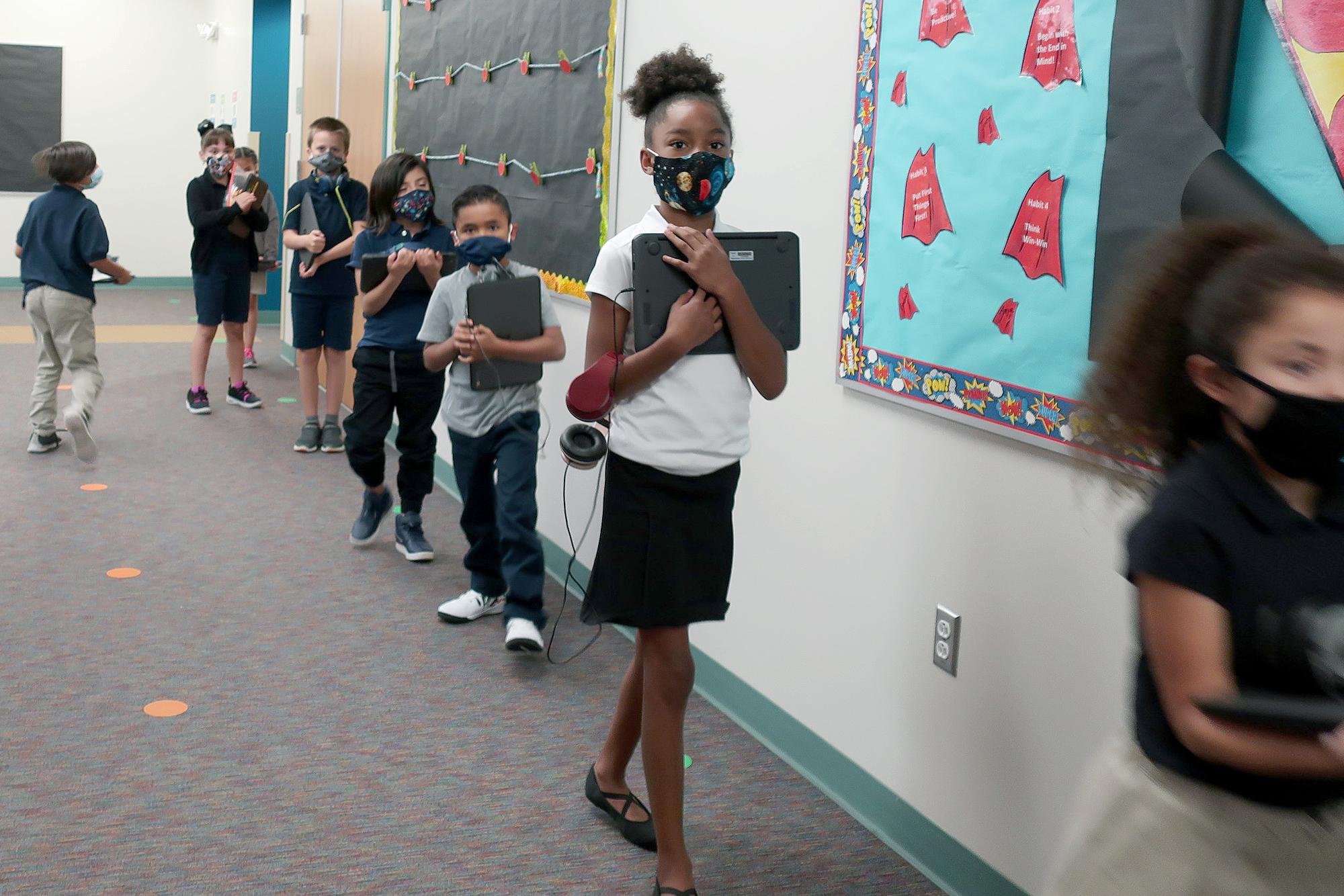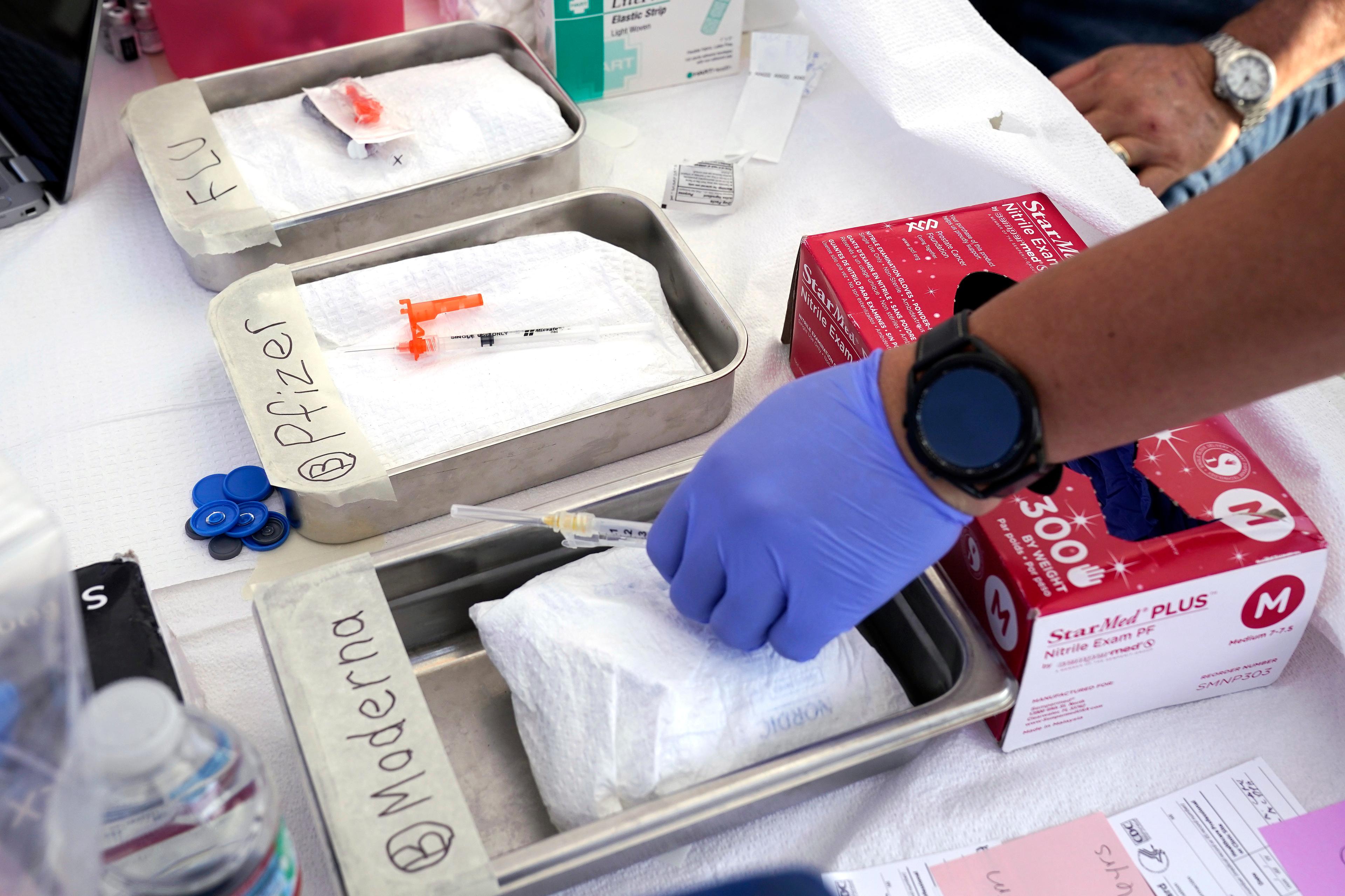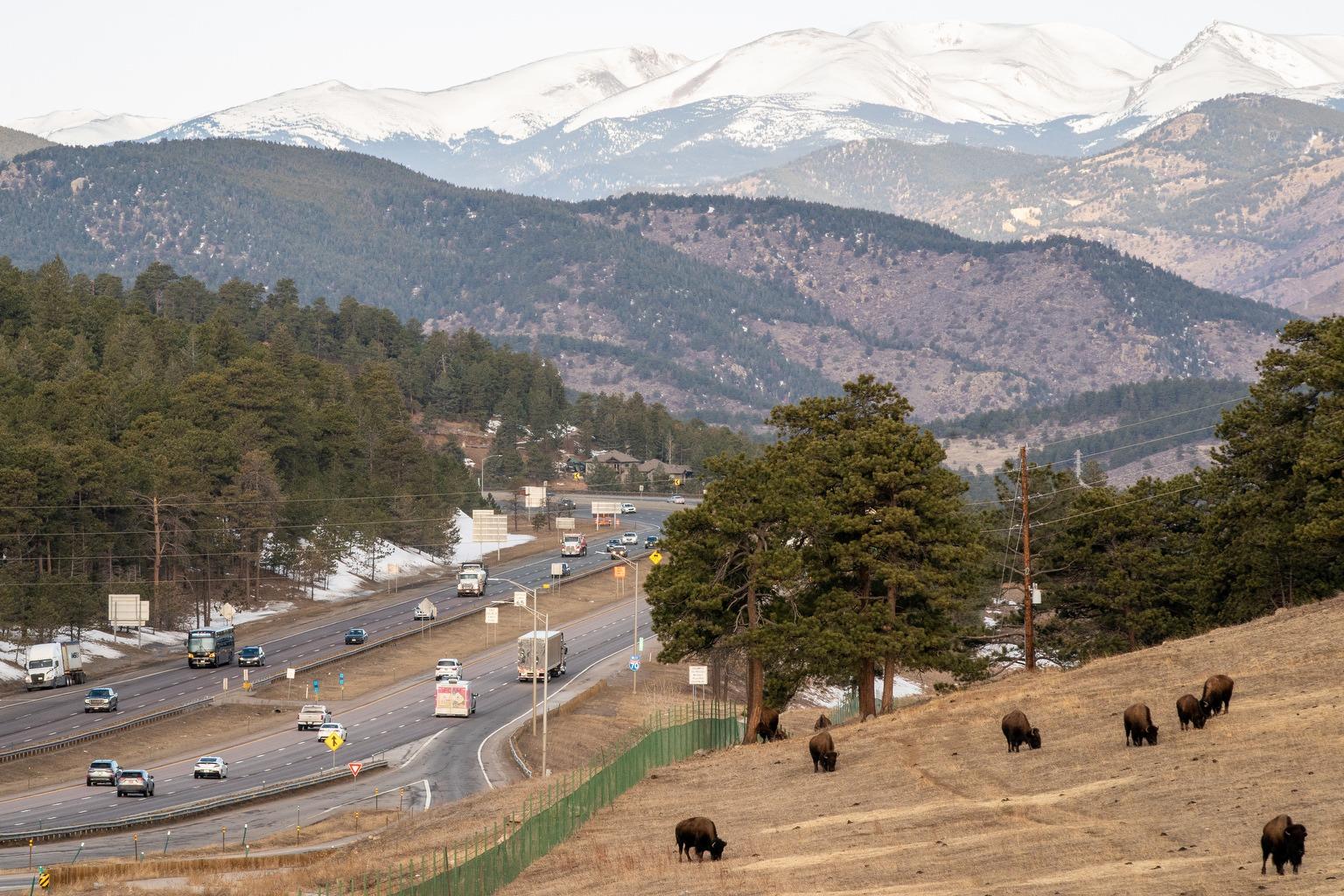
Update Oct. 29: Both Westminster Pubic Schools and Englewood Schools have decided to move to all-remote learning for two weeks starting on Nov. 2. Our updated original story continues below.
Rapidly rising coronavirus infection rates in five metro counties have pushed Denver Public Schools — the state’s largest school district — to keep third through fifth graders home and learning remotely through the Thanksgiving break. Middle and high schoolers will stay home until the end of the semester. Even so, other metro districts with similar demographics and the same rising COVID-19 numbers are pushing forward with keeping their students in school.
While more restrictive state health orders affect restaurants, gyms, churches and the number of people allowed in private gatherings, schools are another matter.
Both Denver and Adams counties have seen the biggest case increases. While Adams refers to “skyrocketing” COVID-19 rates, and a two-week test positive rate of 9.3 percent, most county school districts will let younger students keep learning inside schools, with the exception of Adams 14 in Commerce City and Aurora Public Schools who recently transitioned younger students back home. Some districts will keep their high school students in in-person learning.
Public schools are defined as critical businesses so the state order says that schools can continue to provide in-person learning if they work with local public health officials and follow health guidance on cases and outbreaks.
As Denver moved to the more restrictive level 3, DPS officials consulted with health authorities and decided to make adjustments. Before the city’s announcement, all three metrics on the district’s COVID-19 dashboard turned red, the most concerning zone.
The abrupt shift will be a challenge for working families.
Denver elementary school students just got back into classrooms a week ago. Now, a few days later, third through fifth graders will shift back to remote learning on Monday, Nov. 2. And now middle and high school students won’t step foot inside their classrooms the entire semester.
“I’m upset that I can’t go and I hope to go back soon,” said DPS eighth-grader Rob DeMarrias.
While he misses his friends and teachers, everyone in his family except him and his little brother has gotten COVID-19. So his message to people is to “Stay safe and make the right choice.”
In a letter to families, Superintendent Susana Cordova said she was concerned the community trend would force the district to eventually shift more staff and students to remote learning.
“I am heartbroken that we are here,” she wrote. “At the same time, it is clear that we need to balance this with the needs of our community to drive the COVID rates down. There is real fear, anxiety and concern on all sides, regardless of where you stand on this issue — parents and students who desperately want their children to be in school, teachers and leaders who are concerned about their health and safety.”
Preschool through second graders, however, will continue to attend full-time and in person.
Cordova said the youngest students struggle the most with remote learning and are developing readers. Another reason she said was a low rate of active COVID-19 cases for early childhood education through second graders — 0.14 percent and under 1 percent for elementary staff.
However, district dashboard data updated on Oct. 27 said the positive COVID-19 rate for all DPS students was 0.09 percent out of the total student population and a 0.38 percent rate for staff.
Cordova has repeatedly stated there is very little evidence of COVID-19 being spread inside of schools, though older students are more likely to transmit the disease.
Though Orla Dermody’s second-grade son squeaked in under the line, she is frustrated by the lack of clarity on how the district weighs risks.
“I'm really disappointed,” the Denver mother of two said. “The risks of kids not being in school are across the board, pretty massive across all ages. The risk of COVID seems to have been managed pretty well in all the schools that have stayed open across Colorado and across the country. It just baffles me as to how the risk of not being in school continuously outweighs the low risk of COVID transmission in schools.”
In a letter to Gov. Jared Polis, the Colorado chapter of the American Academy of Pediatrics called for tougher restrictions on social gatherings and the prioritization of safe, in-person education.
“Data from many Colorado school districts that have opened with in-person learning shows children are not contributing to significant COVID spread in classroom settings,” the letter stated. It also stressed the importance of keeping children in school where they can safely learn, socialize, get physical activity, and access mental health care, special education and meals.
Dermody said working families’ nerves are frayed. During online learning, she said her young son was moodier and stressed. When he returned to school in-person, everything got easier and much happier for the whole family.
“We noticed, it [stress, bad mood] completely disappeared when school started.”
Things are a lot more scattershot in Adams County, which covers a majority of the northeast corner of the metro area and is home to multiple districts. When COVID-19 rates began to rise in the county a couple of weeks ago, after three weeks of in-person learning, Adams 12 Five Star Schools, which covers parts of Broomfield and Thornton, sent older students home for the remainder of the fall semester.
After the change in the county’s Safer At Home status, the district announced that elementary students will continue with in-person learning.
Adams 12 Superintendent Chris Gdowski said students were wearing masks, social-distancing, and washing hands. But he told the community in a video message that public health officials say people aren’t doing that in private gatherings at homes or block parties — and COVID-19 rates are rising.
Twenty percent of the Aurora school district is in Adams County. Less than two weeks after returning to school classrooms, most elementary and middle school students transitioned back to fully remote learning on Oct. 16. The board of education cited increasing community transmission of COVID-19.
Some students continued with in-person learning, including preschool, kindergarten, and some students with special needs and English language learners. At the time, the district said older students would stay in remote learning until Nov. 19. The district said it will evaluate data again for elementary school students on Nov. 9.
Other districts are staying the course, with the approval of Adams County and Tri-County Health Department officials.
Brighton 27J school district has offered both online and in-person learning since Sept. 1. The district has been able to safely educate students, of which about 70 percent of students selected the in-person learning option.
Currently, 1.4 percent of the district’s students are in quarantine, with 27 positive COVID-19 cases in the district.
In a letter Brighton 27J shared with families, it said that in an emergency Friday night call between district and health officials, Dr. John Douglas, executive director of Tri-County Health, praised the work of school districts, and specifically cited the layers of protection and low to no transmission of COVID-19 within schools.
27J Superintendent Chris Fiedler said in a letter to families that nearly every school has had experience with quarantining a cohort or classroom of students for a few days or the full 14 days.
“That being said, the vast majority of students attending in person (96 percent plus during any given week during the first quarter) have been able to come to school on the days they are scheduled to be in person,” he said. “To date, we have little to no transmission of COVID-19 from student to student, student to staff, or staff to staff within the school setting when the protocols are followed with fidelity.”
Westminster Public Schools had intended to push forward with in-person learning for children of all ages, which began Aug. 20 for the two-thirds of students who chose that option. However, after an Oct. 28 Board of Education meeting, the decision was made to move to all-remote learning for two weeks starting on Nov. 2. The plan has the support of Tri-County Health's executive director.
“I can’t stress enough the importance of keeping our students in the classroom,” wrote Superintendent Pamela Swanson on the district's Facebook page announcing the change. “If we all step up right now, we can slow the spread of COVID-19 and ensure that our students continue their education in an environment that is safe for them and WPS staff.”
Mapleton schools will also continue to offer in-person learning for 4,900 students and online for the 1,800 students who chose that model. It’s had both models in place since the beginning of the school year.
“Our layers of protection are working,” Superintendent Charlotte Ciancio said in a letter to families. “Our collaboration with Tri-County Health Department is working. Our contact tracing and quarantining are working.”
And while rising cases have provoked reactions across the board in Denver and Adams, school districts in neighboring Arapahoe County will mostly stay the course. Littleton Public Schools and Cherry Creek School District don’t plan on any changes at this time. Sheridan Schools temporarily shifted to remote learning for a single week and will soon return to in-person learning. Englewood Schools, however, announced on Oct. 28 they will move to all-remote learning for two weeks starting on Nov. 2.









